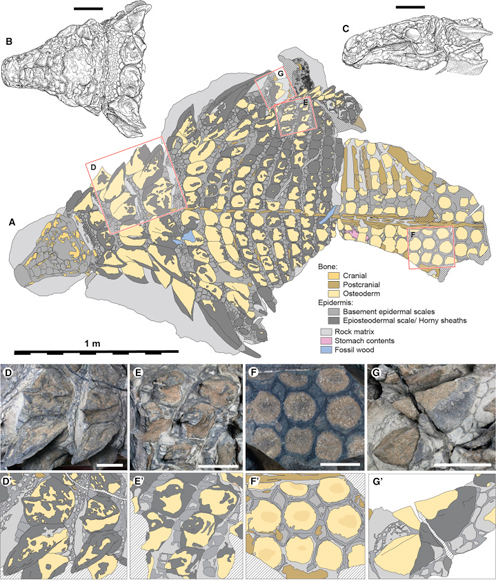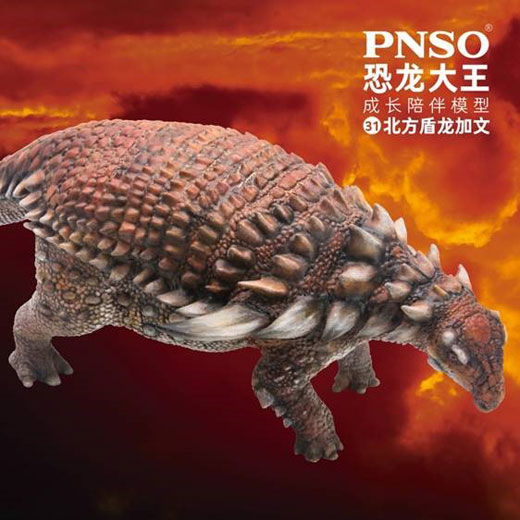The Armour of Borealopelta markmitchelli
With the publishing of the formal description of the nodosaurid Borealopelta markmitchelli in the academic journal “Current Biology” this week, Everything Dinosaur has received a number of emails concerning this amazing fossil discovery. The specimen, was lovingly prepared by museum technician Mark Mitchell who worked on the fossil for five and a half years, a total of something like 7,000 hours, as the dinosaur was exposed from its matrix one grain at a time.
Borealopelta markmitchelli
The holotype (TMP 2011.033.0001), is currently on display at the Royal Tyrrell Museum, part of an exhibition entitled “Grounds for Discovery”. This exhibition highlights the personal stories and amazing fossils that have been discovered as a result of the Museum’s collaboration with numerous industries such as road construction, house building, mining, and oil and gas extraction.
The emails we received concerned aspects such as the animal’s size (5.5 metres long and weighing around 1.3 tonnes) and from which part of Alberta did the fossil come from (north-eastern Alberta). However, most of the emails were enquiring about the preservation of the armour.
The diagram below should help.
A Schematic Drawing of the Borealopelta markmitchelli Holotype Specimen
Picture credit: Current Biology
Studying the Armour of a Dinosaur
The picture above shows a schematic drawing of Borealopelta (A), with line drawings (B) and (C) showing the skull in dorsal and lateral views. The different colours illustrate the preservation of different tissue types and the photographs (D to G) with accompanying line drawings show the range of dermal armour including osteoderms and scutes. A close-up view of the neck (D), shows alternating cervical osteoderm bands (and preserved keratinous sheaths) and polygonal scales.
Photograph (E) shows a close-up view of the flank illustrating lateral thoracic osteoderms (with keratinous coverings) and polygonal scutes (scales). A close view of the sacral shield area (F) showing more elements that make up the dermal armour and (G) shows a view of the forearm of Borealopelta (antebrachium) showing the amour (osteoderms and scales).
Note
Scale bar = 1 metre (A) and scale bar = 10 cm (B to G).
Body Armour in Life Position
The wonderful thing about this particular armoured dinosaur is that the osteoderms and scales that make up the body armour have been preserved in the position they were in when this dinosaur roamed Alberta during the Early Cretaceous. The three-dimensional nature of the fossil has really helped the research team to understand how the mosaic of scutes, scales and osteoderms combined to provide the dermal armour. The remains of the keratin sheaths and overlying skin was also preserved in some areas, melanosomes identified provide evidence of this dinosaur’s colouration.
To read an article about Borealopelta markmitchelli: Amazing Armoured Dinosaur Fossil Reveals Countershading.
The picture (above) shows a PNSO Borealopelta dinosaur model.
To view this range: PNSO Age of Dinosaurs Models.
Visit the award-winning Everything Dinosaur website: Everything Dinosaur.








Leave A Comment